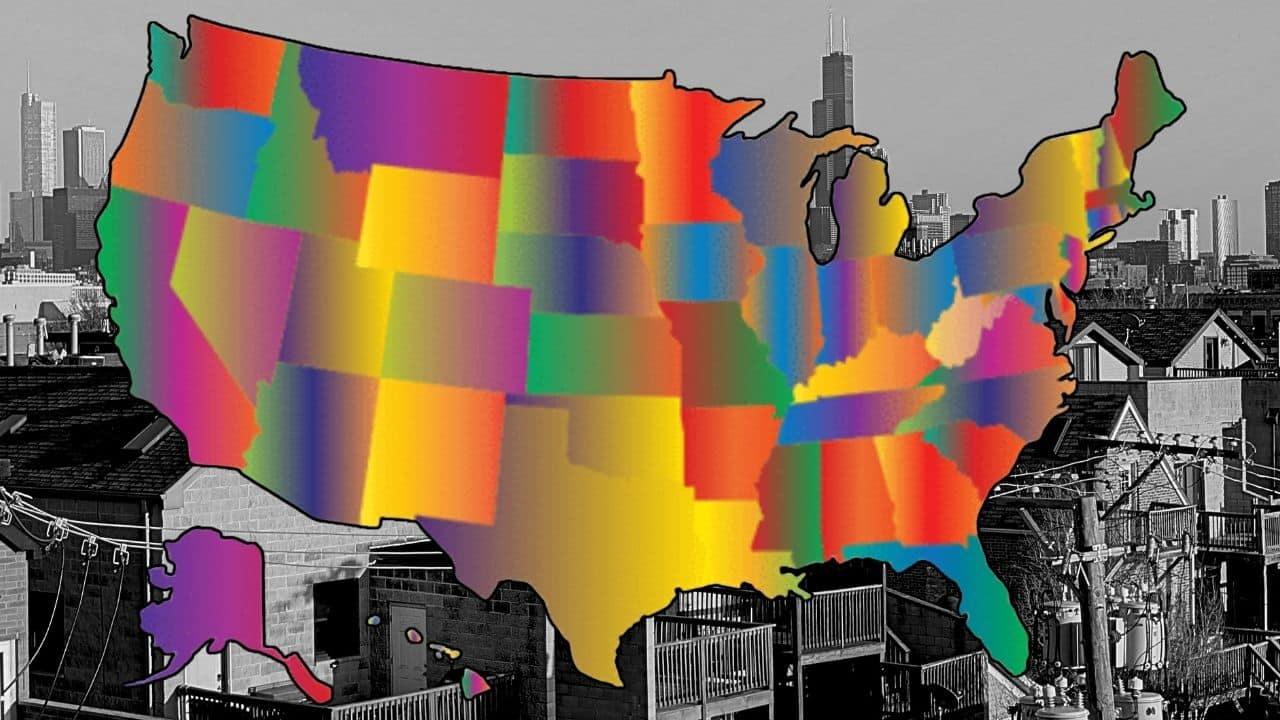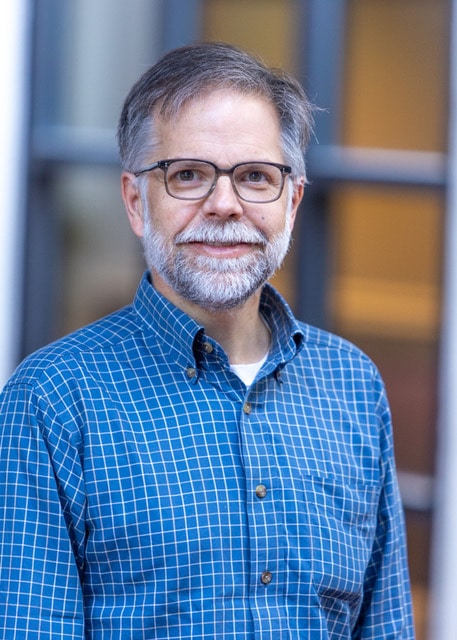State Tax Credit Roundup: The Upper Midwest
Exploring State-Level Subsidies in Illinois, Wisconsin and Minnesota

By Lyla Maisto
10 min read

In recent years, the Upper Midwestern states of Illinois, Wisconsin and Minnesota have marketed themselves as inclusive, low-cost and “climate-proof” havens for growth. And between 2010–2020, the populations of Wisconsin and Minnesota grew apace: Wisconsin’s population increased by 3.6% between the 2010 and 2020 Census counts, and Minnesota’s population increased by 7.6% in the same period. In both Wisconsin and Minnesota, a once-plentiful housing supply has dwindled to a shortage.
On the basis of population growth, shifts in Illinois’ population — and the corresponding need for affordable housing supply — are more checkered. The Prairie State experienced a slight decline of 0.1% in population from 2010–2020, with the decline most pronounced from 2019–2020. Even as Illinois experiences this slight dip, however, intrastate demographic shifts and wage stagnation have invigorated policy initiatives to expand the state’s affordable housing stock.
Affordable housing advocates in these states have developed new tools at the state level to bolster (and, in some cases, mirror) the federal Low Income Housing Tax Credit (LIHTC) program, in hopes that growth can continue in a sustainable and affordable manner. The three states are socioeconomically interconnected, with multiple combined Metropolitan and Micropolitan Statistical Areas straddling state lines.
These state-level developments have played out against a backdrop of conflicting narratives and policy aims in a divided Washington. While the federal budget reconciliation bill expanded LIHTC while lowering the private-activity bond threshold from 50 percent to 25 percent, other supportive housing initiatives are continually under threat — and, in states that do not comply with the immigration policies of the Trump administration, affordability advocates are wary of federal funds being withheld in retaliation. With the continued government shutdown, many low-income residents will also face significant instability in the near term, with SNAP payments delayed, supportive housing initiatives threatened, and household budgets stretched even further beyond capacity.
Mindful of this tumultuous landscape, Tax Credit Advisor spoke with tax professionals, legislators and affordability advocates in the region about state-level efforts to keep affordability growing on pace with population trends.
Illinois: The “Donation Tax Credit,” Expansion Efforts, and Federal Setbacks
In Illinois, national conversations often focus on Chicago and surrounding Cook County, where need is perceived to be highest. And in 2021, affordable property tax relief was passed in Springfield with a specific eye to Chicagoland, aiming to ease high assessments in order to decrease the upkeep costs of affordable housing for multifamily property owners. The Affordable Housing Special Assessment Program (AHSAP) enables county assessors across the state to provide relief for any owner who demonstrates a continuous effort to maintain and improve existing affordable units.
To receive an assessment reduction under AHSAP, owners must also prove that residents pay no more than 30 percent of their income towards rent. In Cook County, the state’s most populous county, the program is mandatory; all other counties must participate unless the county board votes to opt out.
AHSAP — along with other 2021-era state policy initiatives aimed at easing the housing squeeze — builds on the momentum established by the Illinois Affordable Housing Tax Credit (IAHTC), enacted in 2001 and renewed quinquennially since.
Within the state, the IAHTC is known as the “donation tax credit.” The resource encourages private investment in affordable housing by providing donors of qualified donations with a one-time tax credit on their Illinois state income tax equal to 50 percent of the value of the donation. The donor can choose to transfer the credits to the project, which creates additional project financing through syndication of the credits.
In a key sense, therefore, IAHTC is distinct from federal LIHTC: funding comes from a hodgepodge of donors, fluctuating year-over-year.
Eligible donations include money, securities, real estate or personal property. Donations must be provided, without consideration, to a qualified non-profit affordable housing sponsor for an affordable housing project.
IHDA administers the statewide program, and the City of Chicago’s Department of Housing and Economic Development administers the program in the City of Chicago. IHDA receives 75.5 percent of the annual IAHTC allocation, while the City of Chicago receives 24.5 percent. Each administrative entity has its own application process.

Allocations of IAHTC contribute to new and rehabilitative projects throughout the state, and have made a material impact on the state’s housing stock since its passage: A recent study from researchers at the University of Illinois Urbana-Champaign estimates that the IAHTC has boosted the state’s affordable housing supply by roughly 5.6 percent in its 24 years on the books.
In recent years, the IAHTC has been oversubscribed.
While a critical resource to the development of affordable housing across Illinois, the resource is more limited than other state tax credit programs that have gotten off the ground in other states, says Allison Clements, executive director of the Illinois Housing Council in Chicago. “For the past five years, we’ve been looking to build on the success of the federal LIHTC program and get a state [equivalent] off the ground,” she says. “In 2021, an affordable housing omnibus bill passed the General Assembly that allocated ARPA funds to fill financing gaps on federal LIHTC developments. Those funds contributed to the development of over 3,000 affordable rental homes units across the state. Now that ARPA funds are exhausted, we need a permanent source to keep pace with demand for housing in Illinois.”

Advocacy efforts in the Prairie State, come amidst the backdrop of federal saber-rattling and threats to withhold federal funding to Illinois, as the Pritzker administration rebukes immigration policies they maintain are unconstitutional.
“If the Trump administration were to get its way, it seems that agencies and nonprofits in Illinois would not be able to apply for federal funding,” says Bob Palmer, policy director for Housing Action Illinois, citing a temporary restraining order in place based on litigation challenging the requirements of a recent funding opportunity from U.S. Department of Housing and Urban Development to construct permanent supportive housing for individuals and families experiencing homelessness. “That’s troubling and unjust from our perspective.”
Wisconsin: Supply Stagnation in a Contentious Climate
Wisconsin’s State Housing Tax Credit (WI SHTC) was passed in 2017, and directly mirrors the federal four percent LIHTC program. Through two gubernatorial administrations and a hyperpartisan state legislature, the WI SHTC has become oversubscribed, and Democratic legislators are currently working to expand the program with mixed results. “This is reaching true crisis proportions at this point,” says Rep. Lisa Subeck (D-Madison), one of the few authors of the 2017 bill who has remained in the Legislature for all terms since its passage.
Subeck’s constituency in the 79th district, which covers rapidly-growing areas on the south and west sides of Madison, is among the hardest-hit by the state’s shortage of housing. And despite the dwindling supply in the state — particularly in its two largest urban centers, Milwaukee and Madison — she says that the WI SHTC has been modestly successful, helping to stave off worse conditions. “I’ve seen where the Section 42 tax credits could be successful for creating housing opportunities,” Subeck says. “One of the challenges we have is that often, the tax credits don’t reach far down enough into the income levels, and as Wisconsin wages don’t keep pace with the cost of living, that’s becoming a bigger and bigger challenge,” she explains.

But in the state’s notoriously divided political climate, those gains may not be sustainable, Subeck warns. “When I try to think about why we haven’t been able to find bipartisan support, I think it really is mired in politics and partisanship, and less about actual policy,” she laments.
Looking to 2026, Subeck is unsure of what the posture of the state’s gubernatorial election will be towards maintaining and expanding WI SHTC, but she hopes that bipartisan moments in the Capitol, rare as they may be, will continue around housing. She points to efforts by her colleagues in the Assembly, highlighting those of Rep. Kalan Haywood (D-Milwaukee), who she notes as an outspoken stakeholder in current caucus discussions to expand the WI SHTC.
“Rising costs are putting more pressure on Wisconsin’s working families. And that also puts more pressure on the Legislature. While I don’t like for things get to a crisis for us to work together, I do think it’s potentially opening doors to opportunities to work together,” Subeck says. “I think that many of my Republican colleagues are feeling pressure from their constituents to address affordable housing. I think we have an opportunity.”
And Subeck wonders whether the recent redistricting, ordered by the state’s Supreme Court, will impact the conversation. “Despite the heavy gerrymandering here, we did get new maps ahead of the last election,” she notes. “The tide is shifting. While Democrats are currently in the minority in the Legislature, that could change in the next election. … The balance is a lot closer than it was for many years.”
“That, too, is giving us more opportunities for bipartisanship, because there is pressure for some folks in those swing districts to be accountable to their constituents,” Subeck muses. “That pressure wasn’t there when we were so badly gerrymandered.”
Minnesota: A New Tax Credit Improves on Illinois’ Donor Formula
Similar to Illinois, Minnesota’s State Housing Tax Credit (MN SHTC) is “donor-based.” First passed in 2024, the credit enables state taxpayers to contribute to a pool of publicly available grant funding for affordable development — either general or project-specific. In return, donors receive a tax credit for up to 85 percent of their donation value. The credit is scaled according to donation amounts: higher donations get a higher return in the form of the tax credit.
In its first year, the MN SHTC funded four affordable developments across the state, creating over 80 affordable units in Ramsey, Goodhue, Cottonwood, and Otter Tail counties, representing a strikingly well-distributed portfolio of senior and rural affordable housing in the state’s southeastern, southwestern, and northern regions, along with urban townhomes in metro St. Paul.

“No state appropriations are used for it. It’s all based upon contributions from taxpayers,” explains Matt Carlson, senior manager at Eide Bailly, a regional tax firm with offices in Mankato and Minneapolis. “It really is a win-win in that regard — from the state’s perspective for these projects, and for taxpayers who can claim a credit based upon their donation.”
Looking ahead, Carlson says that there have not been major initiatives to pass a state-level housing tax credit with a basis in appropriations, as Wisconsin has done. But from what Carlson has gleaned in conversations with advocates and legislators, expansions of the program — and the establishment of more affordability incentives — are perennial topics in St. Paul. “Generally speaking, most of these opportunities and programs come up for discussion almost annually,” he says.
As a donor-reliant credit, the state cannot necessarily anticipate how many tax credits it will issue to donors, and since the state cannot afford to hand out unlimited tax credits, the applications for the MN SHTC close every year. Although this has led to some oversubscription, Carlson stresses that the enthusiasm around the fledgling program has been promising, and has proven the MN SHTC’s efficacy.


